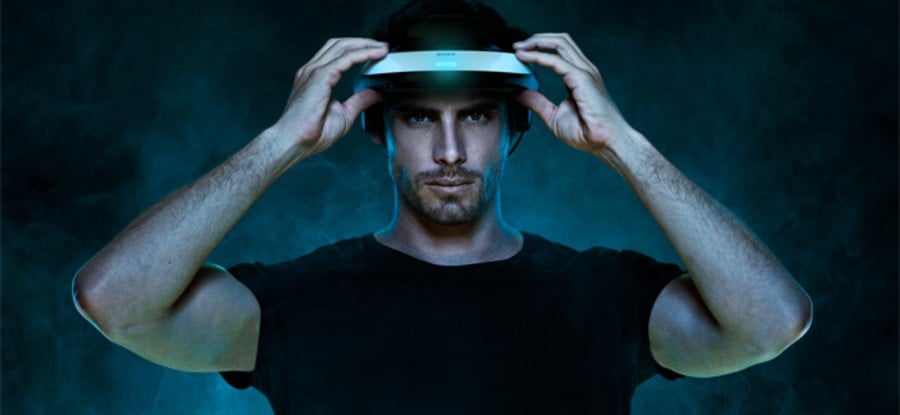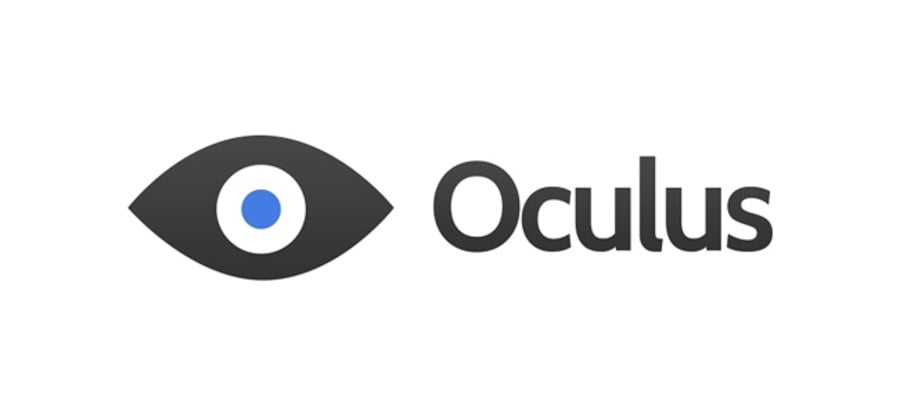
Sony’s clearly enjoying itself in interviews at the moment. Worldwide Studios president Shuhei Yoshida has been dropping hints regarding a hypothetical PlayStation 4 headset harder than the beats in a Skrillex song, but no one appears to have read too deeply into the comments. “We’ve got a couple of [Oculus Rift] development kits,” he cheekily told Engadget earlier in the year. “I’ve tried it out and I love it.” When asked about the technology by CVG at GamesCom last month, he made an even more suggestive statement. “We are doing a lot of things that we can't talk about,” he grinned.
Only over the past couple of days, though, have the rumours intensified. Eurogamer.net started the ball rolling, reporting that the company is deep into development on its own wearable technology. The peripheral is supposedly already up and running in DriveClub, which suggests that the initiative is being spearhead by the same Liverpool-based research and development division that drove the PlayStation 3’s adoption of stereoscopic 3D. Allegedly, the firm has been showing the peripheral to third-party publishers during secret meetings – something that it intends to continue at the Tokyo Game Show. According to Games Industry International, the Japanese giant wants to entice ample third-party support before announcing the product in the New Year. But even with strong publisher backing, is it something that you’d actually buy?

It’s important that we clarify the type of technology that’s actually being touted first. Rumours have pegged Sony’s device as similar to the Oculus Rift, which separates it from the organisation’s own HMZ line and products such as the Virtual Boy. The proposed headset will purportedly function alongside the PlayStation Eye, tracking bobbles on the outside of the unit to detect its position. Much like with Oculus VR’s semi-established device, this head tracking feature will allow you to “look” around, manipulating the image that you see on the device’s screen. This means that in first-person games, you won’t need to move the right analogue stick to get a view of your surroundings – you’ll simply crane your neck in the direction of things that you want to examine in more detail.
Imagine being able to judge a tricky bend by looking out of your window in DriveClub, or keeping check of chasing racers by glancing behind you
It’s easy to imagine how this feature could be applied in PS4 games. Evolution Studios, for example, has been keen to highlight the cockpit viewpoint of its upcoming next generation racer. With an Oculus Rift-esque headset, you’d be able to physically look around these lavishly recreated vehicle interiors by simply moving your head. Furthermore, you’d be able to judge a tricky bend by looking out of your window, or keep check of chasing drivers by glancing directly behind you. It doesn’t sound like especially great news for physiotherapists, but it promises a level of immersion that, up until now, has simply not existed in games. Of course, there are downsides.
In its current guise, the Oculus Rift is very blurry. The low resolution of the onboard screen means that it can feel like you’re looking through tissue paper at times. Fortunately, the manufacturer has already solved this issue internally by a constructing a higher resolution device that it intends to ship to consumers in the future, and it’s safe to assume that Sony’s proposed headset would also share this upgrade or risk getting left behind. However, one issue that’s less easy to solve is the nauseating sensation that this kind of technology inherently creates. Even if you’re relatively comfortable with 3D in the cinema, ten minutes in a virtual reality game world can make your stomach feel like it’s about to do backflips. Couple this with the uncommon neck strain that wearing a weighty piece of hardware on your head prompts, and it’s unlikely that you’ll be using the device during lengthy play sessions.

And then there’s the small matter of price. An Oculus Rift development kit currently retails for around $300 (£191), with the company targeting a similar cost for consumer models. Sony, meanwhile, has just announced that its latest personal 3D viewer will sell for around £1,300 ($2,029). Without knowing the specifications of the PS4’s proposed headset, it’s difficult to make a judgment on how much it will cost, but it’s safe to assume that it will be a considered purchase. With the PS4 already retailing for $399, and a PlayStation Eye camera supposedly required to get the headset working, it’s not going to be a cheap option. Should that high price point end up stilting the peripheral’s adoption rate, it could result in the manufacturer struggling to convince third-party publishers to actually support the device in the first place. And as frustrated PlayStation Vita owners will no doubt testify, content is always king.
These are all issues that the platform holder will have foreseen, of course, and it sounds like it’s going to push ahead with the product anyway. According to Games Industry International’s sources, the firm is betting big on the unannounced hardware, and is planning a push on a scale much larger than the PlayStation Move. A cynic would argue that that isn’t exactly encouraging, but it’s worth remembering that the motion wand was a pivotal part of the platform holder’s PlayStation 3 strategy for a good couple of years. The big question is: will its foray into the world of virtual reality make a bigger impact? We suspect that that very much depends on whether the mainstream market is ready for this kind of technology – and whether any of you are actually willing to invest in it.
How much would you pay for an Oculus Rift-esque peripheral for the PS4? Are you even interested in the technology? What challenges do you think that the hypothetical headset faces? Let us know in the comments section and poll below.
Would you buy a virtual reality headset for your PS4? (63 votes)
- Yes, I would definitely purchase one without hesitation
- I really like the idea, but I’d have to try it out and consider the cost first
- No, I’m perfectly happy playing games on my television
Please login to vote in this poll.





Comments 41
hell yes I would!
Yup! Would love to experience it.
As a owner of a rift I would say yes.
BUT not for £1300, no way in hell.
No, I definitely don't like the idea, no matter what will be the price, i like to have control over what i'm playing and this "immersive" state for me, personally, it's not good.
@Faustek Out of curiosity, how much would you be willing to pay? I think the novelty would be enough to make me bite for about $250 - but I reckon it would probably cost more in reality. I'd probably stretch to $300 if there was decent support.
I feel like this might be why we have no idea what several of Sony's first party developers are working on...possibly they don't want to announce until after the peripheral is announced. Also, I remember a couple developers being really excited about what they are working on...saying how what they are working on is amazing with a bunch of exclamation points.
@butcherknife Yeah, you have to imagine if this really is in production, that most (if not all) of the first-party teams will be supporting it in some form.
@get2sammyb Well I did pay $365, including shipping, so around that price.
Believe they would have to go lower. Say around $200 would be the sweet spot for the common man to actually buy it.
Hell yes I would but it kind of depends of the cost.
I'm guessing that they can keep the price down by making it work with the PS4 Camera, but that's just speculation. The tech that goes into it is another thing entirely, what with Sony's recent infatuation with OLED screens - OLED being more expensive than LED, if I remember right.
I'd definitely buy a Sony branded VR-headset, if only because Sony is all about quality.
I wish sony would compete with D-Box and create a motion platform that could be used for their movies and games. Because D-Box is super expensive and needs competition.
I would rather feel my seat rumbling and turning with my car according to what I seen on the screen then looking out of a helmet for more camera control.
I'm not really interested in this stuff, so I wouldn't buy one. I can see this becoming very popular if finally done right though.
It would need a few games to support it and not to cost too much for me. Another worry that I have is that it would probably be awkward to aim in an FPS by moving your head. I'm not sure how that would work, if they can get Move to truely replicate a light gun to combine with this somehow that would be amazing, I don't know how they would make it work when you turn around though. I think that just being able to use the screen for all first person games even if they don't have the motion part of it should be instillated too.
Yeah. I am sorry but maybe I am too old school but I would not enjoy that one bit.
$300 is a lot for just about any add-on peripheral imo. Not saying it's not worth it for the experience, but it's out or range for what I'd pay.
Looking like Stevie Wonder with a Daft Punk hemet on is also a minus for me. :^D
I would pay at max $150 for it. It would possibly be an amazingly integrated peripheral, but only at the right price and if it is utilized well.
@Jaz007 The way it works on Oculus is you still use the mouse for big adjustments and aiming, but you can move your head independently to look around. I agree that it would be amazing with Move.
PS4 has enough peripherals with PS move and Vita.
PS4 can survive without a virtual reality headset.
Sony must also consider that people that has an Oculus Rift won't buy another headset just to use it on a PS4.
I would pay $400 day one if I can use it with all of my PS4 games. Seriously, I really don't need compatibility with head tracking at all, I just want to use the thing as my TV for immersion.
I second @squiggle55 comment!
I'm a hardware slut so of course I would want one. But it would obviously depend on the price.
My 3D vision doesn't work properly...meaning I see a 3D movie or game like something on a 2D screen, just a little darker (because of the "tinted" 3D glasses).
So it depends for me...if this had a 2D mode you could use if you'd just want the immersion and you have the same pic for every eye, I'd definitely try it out...and buy it if it works for me and the price was right.
For immersion, this would be the *cough. Imagine a game like Dead Space with this...I could only play the game 15mins at a time because the sound was so wonderfully done...combine that with vr, and I'd probably get a heart attack.
Or racers...or space sims...or... *drool
I heard that the Occulus Rift is like 300$ and the Omni is another 500$ which if people don't know, is a movement tracker in which a person actually walks around and stuff. That seems a better deal than this thing.
@get2sammyb I would maybe consider $300. And it would have to blow me away at that price.
Just great. They should have had a poll before they started making a device that no one's gonna buy. Seriously though this is gonna be a tough one for them. Feels more like a novelty than a necessity. Not a fan of FPS but it would be interesting to see it work with motion and the camera. For other games though? Moving the right stick is a lot easier than moving your neck.
If its 1080p with over 120-degree FOV for under $300, then I'm in. Too many unknowns at this point, but maybe, baby.
@mibtar what about using it to peek in an FPS? Or control your Cobra's 30-mm gun just by looking, exactly like real military tech? Or while in 1st person mode in an adventure/survival game? Or control the aim (while aiming, only, duh) the way Vita lets you experience? Or...
@charlesnarles that's exactly it. FPS. But for other games?
I would buy a Virtual Reality Headset if, the price was right and there was support for it.
In all honesty, I would pay around $149-200 USD for this; I'm quite tired of jumping on new technology over the past few years.
well i paid a $1000 for my hmz so Yeah I would buy the $*** out if it
@mibtar top of my head: scrolling the map around on RTS, cockpit POV for racers/sims, controlling Navi-esque on-screen kinda-player-characters in isometric perspective, any number of novel and surprising "action sequences" in horizontal/vertical arcade shooters... PS4 could finally have a PC-comparable version of The Sims, controlled by a combo of head-cursor, touchpad, and buttons/sticks. I'd really be surprised if folks who get R&D checks from Sony can't find a way to use it that would please you
i would buy if it wasnt too exspensive
I would definitely be interested in it but Sony would have to show strong support for it first. I wouldn't buy it if only a few games worked on it. But something like Fallout with a VR headset would be amazing. Looking over my shoulder for raiders would be an edge-of-your-seat experience
@mibtar People would definitely buy this, so a poll wouldn't be necessary.
@Lelouch the poll was a joke though
Honestly I love the concept, and I would definitely buy it as a reasonable cost ($150? Sounds like a dream but I'd say that's a tad unrealistic if we're going for "the best" experience. That wouldn't be a bad entry-level price for such a headset though, like with reduced resolution, etc. I think we really shouldn't expect less than $200, but no more than $350). If Sony can pull of an amazing immersion system with this with great support and functionality, while doing something about the "sick stomach" feeling, I think this will sell very well within that price range.
Matrix like technology can't come soon enough.
@Imagremlin Exactly, 3d gaming, when done right, is awesome. I loved Uncharted 3's 3D, Tomb Raider is great in 3D too.
They should make a ps4 unboxing video
Sony cannot avoid creating this headset or they will be left behind. It may not always have to be tied to the PS4. In a couple of years or so it may be a self contained unit incorporating a Vita, or at least be connected to one or to an experia mobile. Its almost a certainty. Oculus are already counting on it. Its one of those things you have to experience to be convinced. It's hard to imagine, but being inside a game rather than being separated via a screen is a totally different experience, can't even compare it. Yes, I'd buy one, even for $600.
Tap here to load 41 comments
Leave A Comment
Hold on there, you need to login to post a comment...